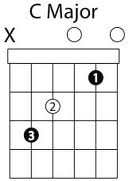 Passive pickups are magnets which directly send the signal from the string, through the wood, into the pickup and into the amplifier. That creates the most organic, natural sound you can get. They are also the more popular type of pickups as many guitarists prefer to use them, because adjusting their volume knob allows them to produce multiple sounds without having to go and adjust the gain and treble on the amp. The disadvantage of passive pickups is their feedback, especially when you introduce gain. You can also get problems with intonation due to a magnetic pull on the strings, but if your pickups are decent quality you shouldn't have a problem. Players such as Jimi Hendrix, Jeff Beck, Eddie Van Halen and Angus Young all used passive pickups.
Passive pickups are magnets which directly send the signal from the string, through the wood, into the pickup and into the amplifier. That creates the most organic, natural sound you can get. They are also the more popular type of pickups as many guitarists prefer to use them, because adjusting their volume knob allows them to produce multiple sounds without having to go and adjust the gain and treble on the amp. The disadvantage of passive pickups is their feedback, especially when you introduce gain. You can also get problems with intonation due to a magnetic pull on the strings, but if your pickups are decent quality you shouldn't have a problem. Players such as Jimi Hendrix, Jeff Beck, Eddie Van Halen and Angus Young all used passive pickups. Active pickups are powered by a completely separate battery stored in the guitar which enables much higher output and clarity of the sound. They were first introduced for Jazz and clean players, but now they attract many metal players due to the hotter output. Metal players such as Kirk Hammett use active pickups as they allow them to push their amps near their limits while keeping the tight clarity of the sound. The problem with active pickups is that you would have to replace the 9v battery every time it starts to fade and also you have to be pretty good to sound good with active pickups as they pick up more mistakes so that could really piss you off.
Active pickups are powered by a completely separate battery stored in the guitar which enables much higher output and clarity of the sound. They were first introduced for Jazz and clean players, but now they attract many metal players due to the hotter output. Metal players such as Kirk Hammett use active pickups as they allow them to push their amps near their limits while keeping the tight clarity of the sound. The problem with active pickups is that you would have to replace the 9v battery every time it starts to fade and also you have to be pretty good to sound good with active pickups as they pick up more mistakes so that could really piss you off.I personally prefer using passive pickups because I like the ability to change my tone with the volume knobs and overall prefer the sound. It just gives you more freedom and possibilities when playing live, because believe me you do not want to go and mess with the amp in the middle of a live show. You will look like a retard or at least like someone who has no idea what they're doing.









